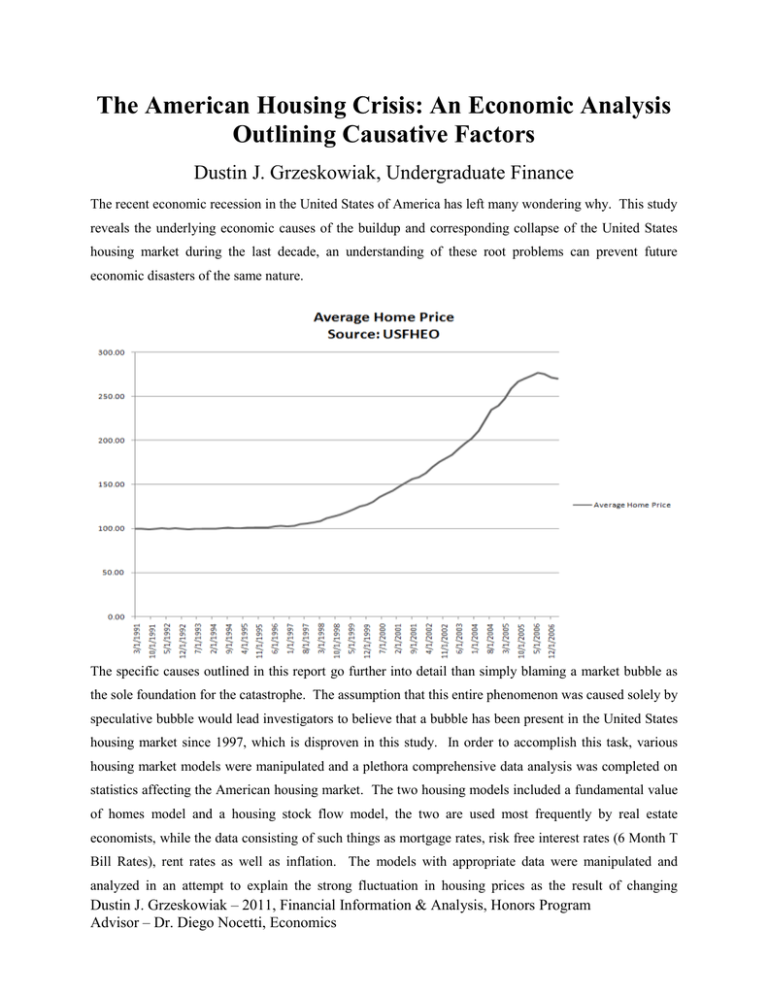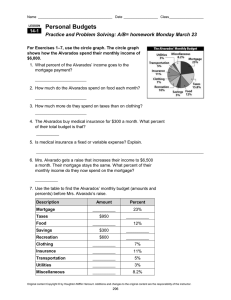The American Housing Crisis: An Economic Analysis Outlining Causative Factors
advertisement

The American Housing Crisis: An Economic Analysis Outlining Causative Factors Dustin J. Grzeskowiak, Undergraduate Finance The recent economic recession in the United States of America has left many wondering why. This study reveals the underlying economic causes of the buildup and corresponding collapse of the United States housing market during the last decade, an understanding of these root problems can prevent future economic disasters of the same nature. The specific causes outlined in this report go further into detail than simply blaming a market bubble as the sole foundation for the catastrophe. The assumption that this entire phenomenon was caused solely by speculative bubble would lead investigators to believe that a bubble has been present in the United States housing market since 1997, which is disproven in this study. In order to accomplish this task, various housing market models were manipulated and a plethora comprehensive data analysis was completed on statistics affecting the American housing market. The two housing models included a fundamental value of homes model and a housing stock flow model, the two are used most frequently by real estate economists, while the data consisting of such things as mortgage rates, risk free interest rates (6 Month T Bill Rates), rent rates as well as inflation. The models with appropriate data were manipulated and analyzed in an attempt to explain the strong fluctuation in housing prices as the result of changing Dustin J. Grzeskowiak – 2011, Financial Information & Analysis, Honors Program Advisor – Dr. Diego Nocetti, Economics underlying asset values as well as increasing demand while including the possibility that speculation occurred in the market. This analysis discovered that the causative factors for this catastrophe included: a. mislead consumer expectations: home buyers historically have been allowed to base future price appreciation expectations on the short term appreciation rates of the previous two years, which in turn led to the creation of two different speculative bubbles present in the market over the last decade, b. poor monetary and fiscal policies taken within the nation: a combination of capital gains tax removal from home sales and historically low interest rates led to short term house price gains that extended home price gains via increased consumer price expectations, c. deceptive mortgage market actions taken by private firms over the last several years: the collapse of the housing market has extended to the macro economy not only because of affected consumer confidence, but because firms involved in the mortgage market took fraudulent actions over the last several years that created a strong link between home prices and several fixed income securities owned by several institutions tied to private equity markets. The larger implication of these findings is that the guidelines expressed for the national mortgage market by its father, President Franklin D. Roosevelt, need to be strictly adhered to in order to guarantee maximum performance and minimum economic suffering, and these guidelines explain that mortgage loans within the United States are of a similar structure, similar term and have similar qualification requirements. Dustin J. Grzeskowiak – 2011, Financial Information & Analysis, Honors Program Advisor – Dr. Diego Nocetti, Economics



